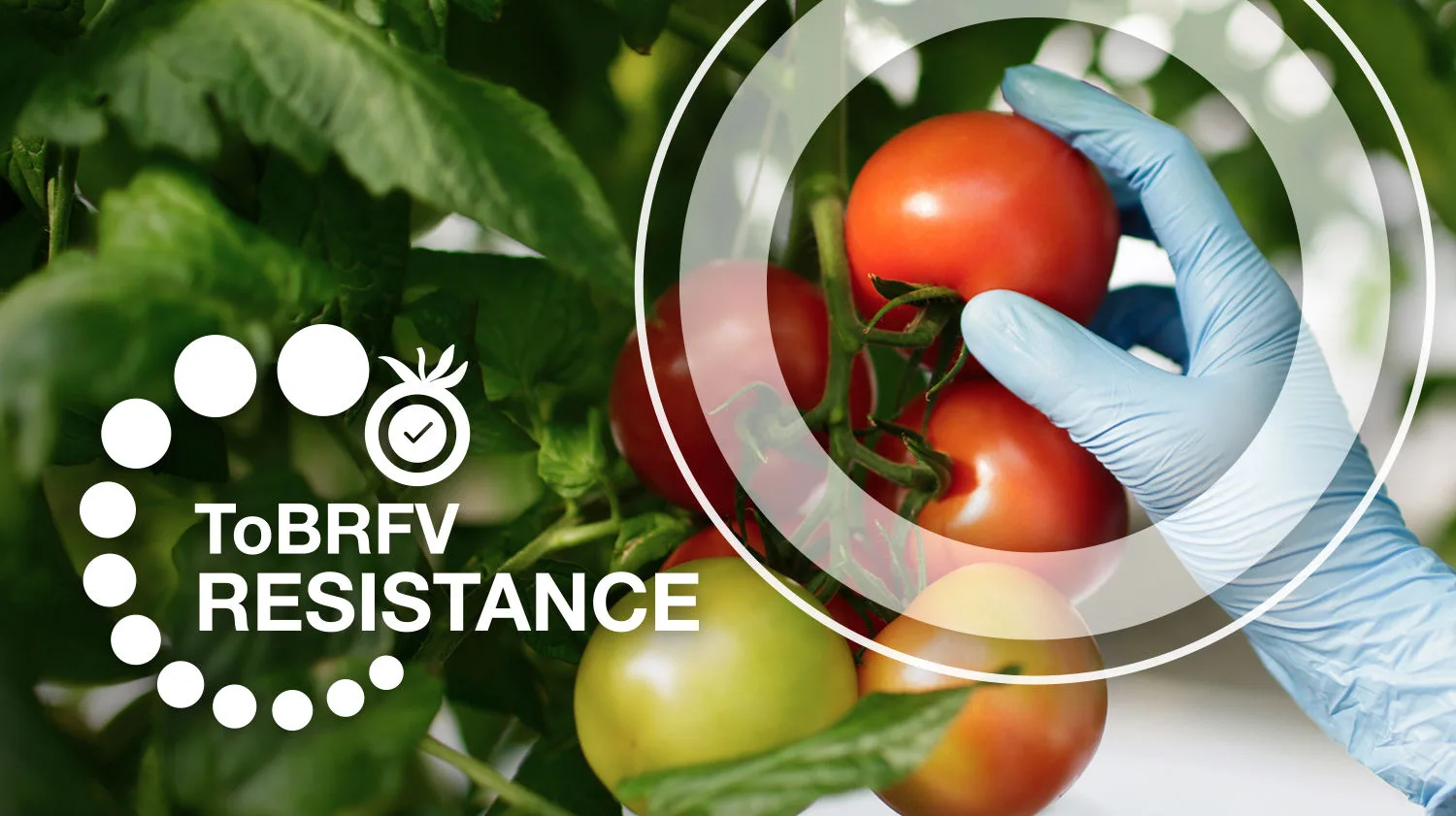Causal Agent
Fusarium oxysporum f. sp. radicis-cucumerinum
Distribution
Worldwide
Symptoms
Cucumber and muskmelon (e.g., cantaloupe, honeydew) are very susceptible to Fusarium oxysporum f. sp. radicis-cucumerinum. In cucumber, initial symptoms manifest six to eight weeks after sowing as pale yellow lesions at the stem base. These lesions may expand and spread to cause a root and stem rot. As the disease progresses, stems are colonized by the fungus leading to breakdown of cortical tissues. In severely affected plants, pinkish-orange masses of macroconidia and microconidia and/or a cottony-like mycelial growth may be observed on the outside of the stem. Plants bearing high fruit loads may eventually turn brown and die, especially when grown under high temperatures.
 Stem rot infection on cucumber grown in an artificial substrate.
Stem rot infection on cucumber grown in an artificial substrate.
Conditions for Development
This fungus can survive for several years as thick-walled chlamydospores in soil or embedded in plant debris. Dispersal of Fusarium oxysporum f. sp. radicis-cucumerinum within and between fields occurs in crop debris, wind-blown soil, rain and irrigation water, and field crews and equipment. Infection commonly occurs at the root tips or through roots wounded during transplant and cultivation.
In protected culture, Fusarium oxysporum f. sp. radicis-cucumerinum can colonize artificial growing media (e.g., blocks and/or slabs). Spread of this fungus occurs through root-to-root contact or by aerial dispersal of macroconidia and microconidia. Pruning creates wounds which are ideal entry sites for airborne macroconidia and microconidia. Disease development is favored by cool air temperatures and soil temperatures ranging from 17–20ºC (63–68ºF).
Control
Two key measures aid control of Fusarium oxysporum f. sp. radicis-cucumerinum: crop rotation and a strict sanitation program for facilities, equipment, tools and people. Early implementation of a strict sanitation program is critical to preventing this disease in protected culture, as infection occurs most often within the first four weeks of a crop cycle. Employ routine scouting and immediately remove all weak and unhealthy transplants. Following harvest, dispose of all crop debris and materials used during production, and all artificial media that contained infected plants. Infected plant debris may be incinerated, buried or taken to a landfill. Sanitize greenhouses and or other growing structures with a recommended disinfectant. If growing media must be reused, it should be steam sterilized, although starting with new substrate is preferable. Resistance to Fusarium oxysporum f. sp. radicis-cucumerinum has been identified in rootstocks of Cucurbita spp. (e.g., C. ficifolia, C. moschata). However, there are no known sources of resistance in cucumber (Cucumis sativus). Currently there are no registered fungicides targeting this Fusarium species. The biological control agent Clonostachys rosea f. sp. catenulata has been shown to suppress Fusarium oxysporum f. sp. radicis-cucumerinum in cucumber grown hydroponically in an artificial substrate.




